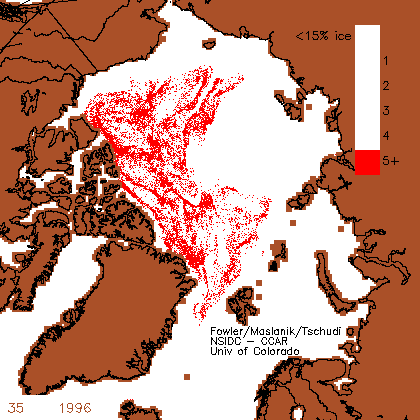During the winters of 1988-1996, strong winter winds pushed most of the older ice out of the Arctic, where it melted in the North Atlantic.
Those winds have changed in recent years, and now the amount of older ice has greatly increased since 2010.
Next summer will not see a big melt, because the Beaufort Sea is full of very thick, old ice.



good summation apart from the last sentence, you do not have enough brain points and data points to be able to predict.
There isn’t enough heat available in the summer to melt all that thick ice in the Beaufort Sea, so the prediction is quite safe.
Certainly if we have another record cold arctic summer like the past one.
I’m guessing Andy is one of those people who believe air at 1 kilogram per cubic metre and a temperature, that except for a small percentage of the year, below or not much above the melting temperature of ice is responsible for providing sufficient energy to melt something 1000 times more dense – ice.
Of course anyone with half a brain realises this is simply impossible – cold air melting ice which is 1000 times the mass per cubic metre – give me a break !
How does the snow survive on mountains in the tropics where the solar insolation is far more powerful than in the Arctic if the surrounding air is melting it ?
It is the warm ocean currents bringing tropical waters at 20 + C when they originate which melts the majority of arctic ice and if they are excluded from the arctic ocean the ice will not melt to the same extent – seems a safe bet to me.